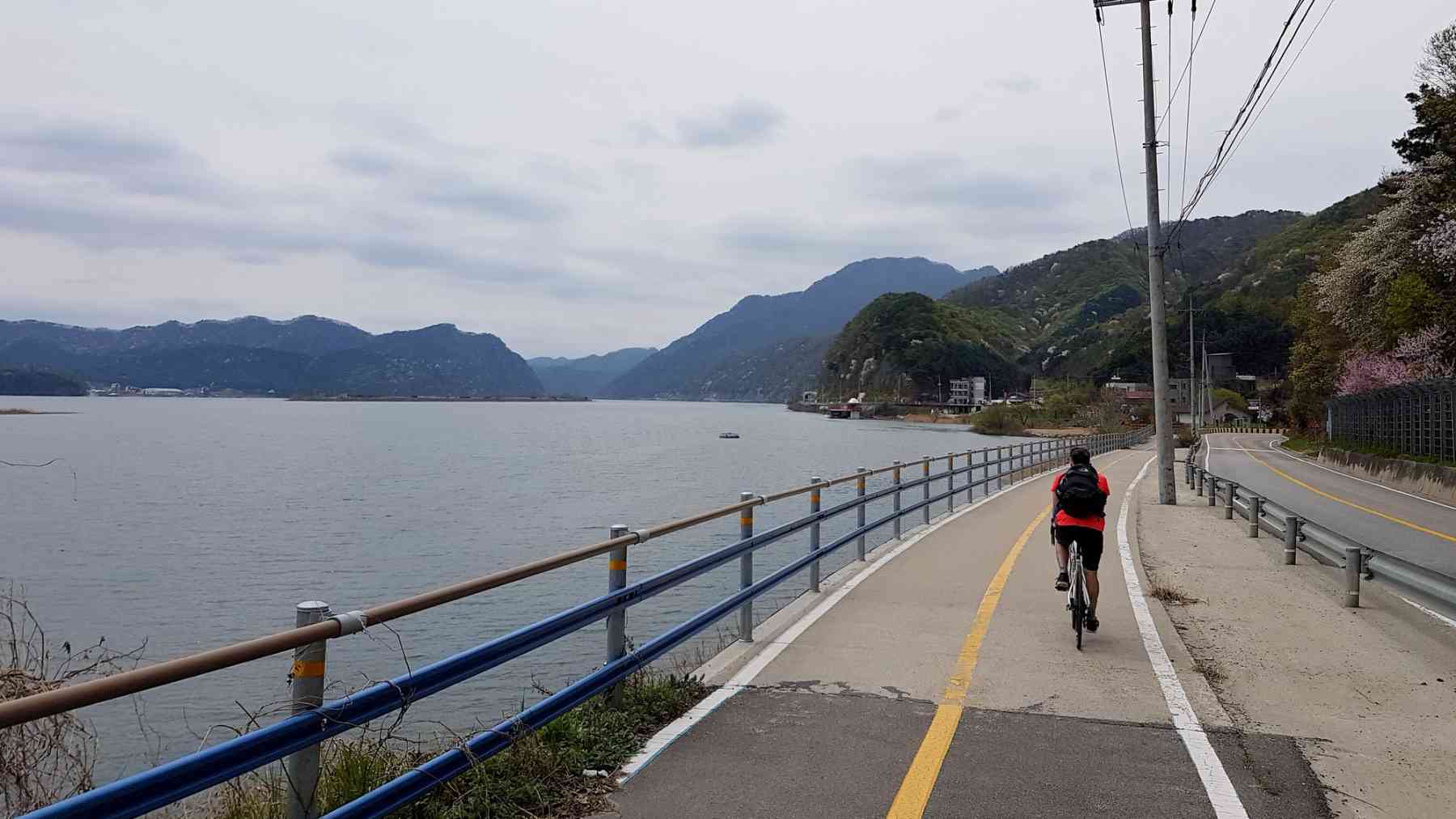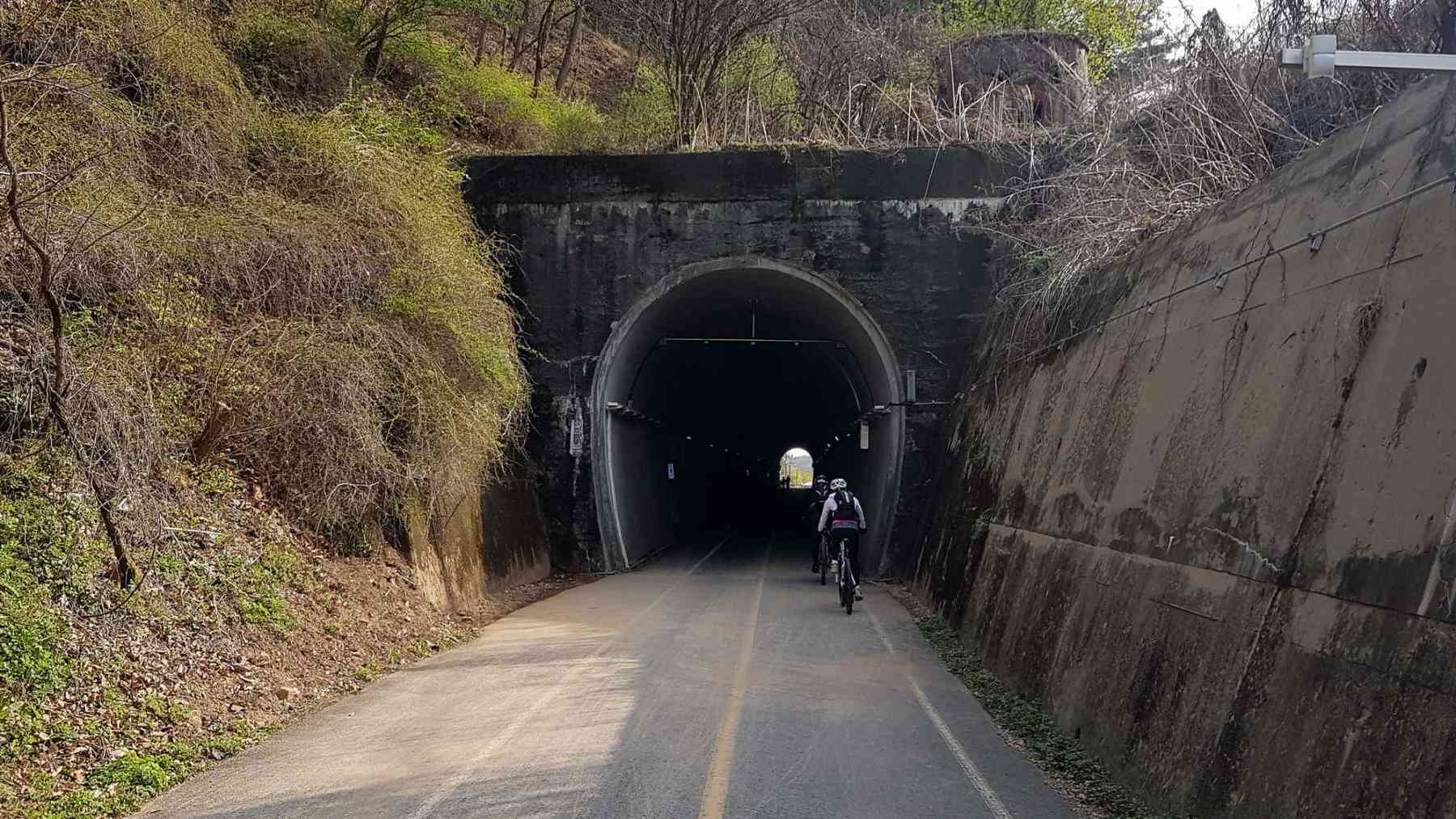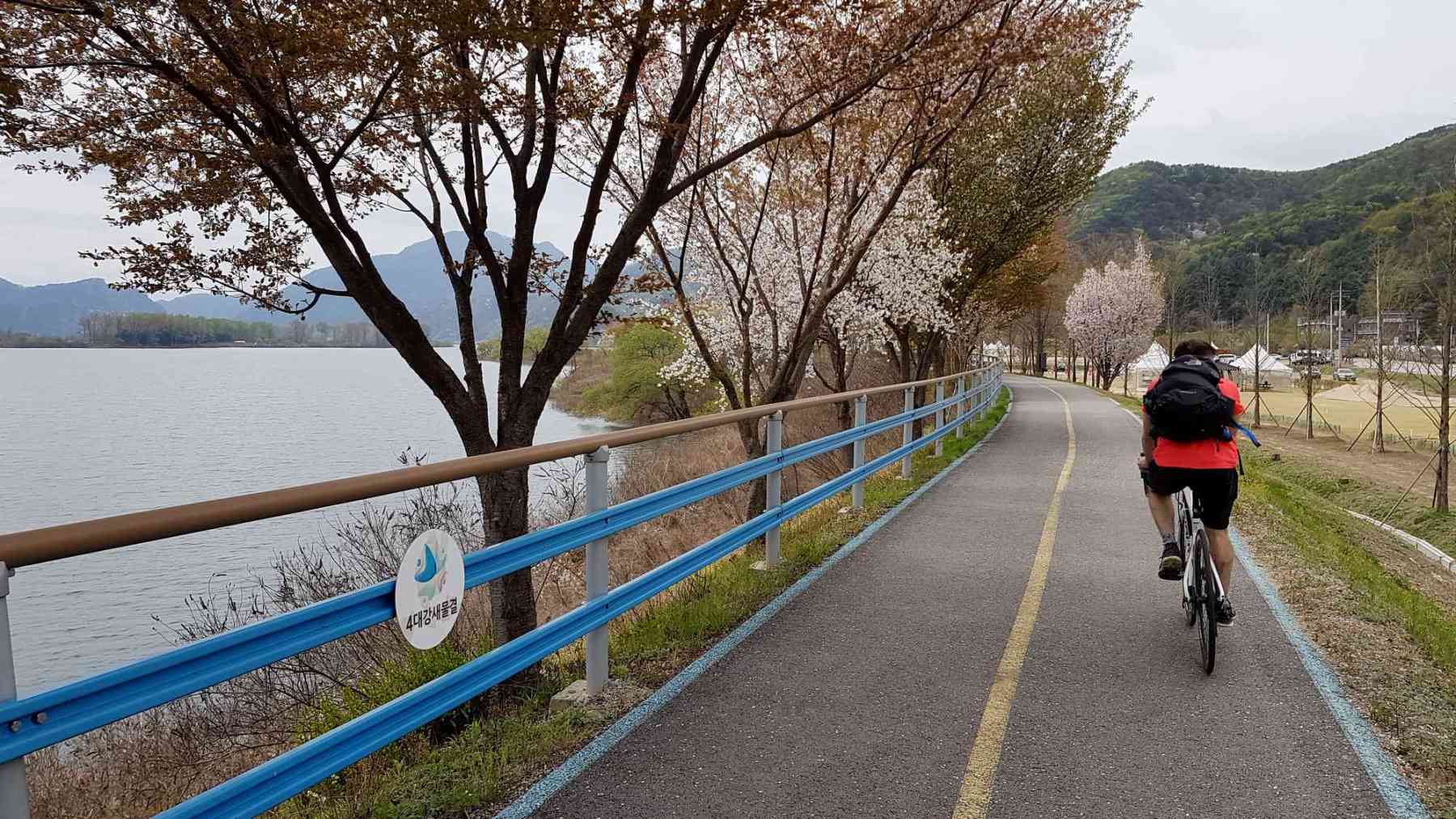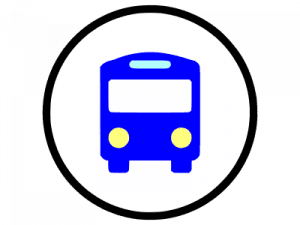Bukhangang
Bicycle Path
A short cycling trip north of Seoul brings romance and railroads.
The Bukhangang Bicycle Path (북한강 자전거길; map) follows the North Han River (북한강; Bukhangang; map), the upper branch of the Han River (map).
The cycling course branches off from the Hangang Bicycle Path east of Seoul and travels 70 kilometers northwest to Chuncheon City (춘천시; map). It rides along a decommissioned rail line, passing valleys, bridges, and green blanketed hillsides.
Chuncheon City
(춘천시)
4 hours
Namyangju City
(남양주시)

- Time 4 hours (1 day)
- Length 70 km (44 miles)
- Elevation 154 m | 30 m (505 ft | 98 ft)
- Difficulty 🚲🚲
- Certifications Bukhangang, Grand Slam
A quick jaunt from Korea’s romantic city to a Seoul satellite city along an old rail line.
Learn about the Bukhan (North Han) River.
Discover the top highlights along the Bukhangang Bicycle Path.
A quick jaunt from Korea’s romantic city to a Seoul satellite along an old rail line.
Bike Path Overview
The path from Chuncheon, Korea’s romantic city, rolls around a lake and follows a tourist train through tree adorned valleys and the North Han river.
Municipalities
The Bukhangang Bike Path travels through two provinces, and three cities and counties. Peruse brief profiles of each.
- Gangwon Province (강원도), Korea’s second largest and one of two bordering North Korea, hosts the nation’s recreational retreats. With forests and powder blanketed mountains in the west, and an expansive coastline in the east, the province boasts two famous seaside cities. Oh, and it hosted the 2018 Winter Olympics in Pyeongchang.
- Chuncheon City (춘천시; a.k.a. Romantic Chuncheon) is the capital of Gangwon Province. In the past, it collected and stored goods sailing down the North Han River for the capital. Today, a series of natural and artificial lakes created by dams surround Chuncheon, with Uiam Lake bordering the downtown area. Many couples and families escape Seoul for weekend excursions, seeking the K-drama enshrined Nami Island or Korea’s new LegoLand.
- Gyeonggi Province (경기도), translating to “the area surrounding the capital,” is the most populated province in Korea. While some Gyeonggi cities act as Seoul’s “bed towns,” others hold enough folks to become self-governing metropolitan cities. Some of Korea’s largest conglomerates keep their headquarters in the province.
- Gapyeong County (가평군) sits on the northeast border of Gyeonggi Province, along the North Han River. Like Yangpyeong, Gapyeong is one of three counties in Gyeonggi Province. (The other 28 are cities). Gapyeong presents a nearby rural expanse for Seoulites, with hike-able mountains, valleys and unique riverside attractions. Its unique food offerings include pine nut soup and makgeolli (Korean rice wine).
- Namyangju City (남양주시) is restricted by Seoul’s greenbelt, a ring around the capital, off-limits to developers. Farms and parks claim much of the city, dispersing residents in pocket population clusters, tucked under hillsides, wedged between verdant valleys. The city maintains a healthy organic agriculture industry. Namyangju’s riverside parks, themed villages and historic sites enchant sightseers.
Certification
There are four certification centers on the Bukhangang Bicycle Path.
Collect all stamps and receive the Bukhangang Bike Path certification. The route counts towards the Grand Slam certification. It is not a part of the Cross-Country certification.
Certification Centers
Here is a complete list of certification centers on the Bukhangang Bike Path.
- Sinmae Bridge (신매대교 인증센터; map)
- Kyunggang Bridge (경강교 인증센터; map)
- Saeteo Samgeori (샛터삼거리 인증센터; map)
- Balgeun Gwangjang (밝은광장 인증센터; map)
How To Get There
The Bukhangang Bike Path collides with the Hangang Path near Seoul. The mega-city’s extensive transportation tentacles give cyclists two terrific options to hop on and off the North Han River’s bike path:
Trains
Lugging around a full-size bike? Intercity buses are the transportation option in Korea… most of the time. On the Bukhangang Bike Path, trains have a slight advantage.
Two train lines offer the closest entry and exit points to the cycling route’s start and finish lines.
Intercity Bus
Not riding on the weekend or holiday? Can’t book train tickets? Intercity buses offer anytime, on-the-spot access to the Bukhangang Bike Path for you and your bike.
Though farther than rail stations, intercity terminals lie close to the cycling route’s start, end, and middle sections.





























